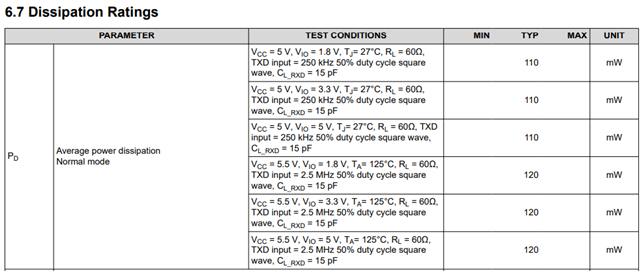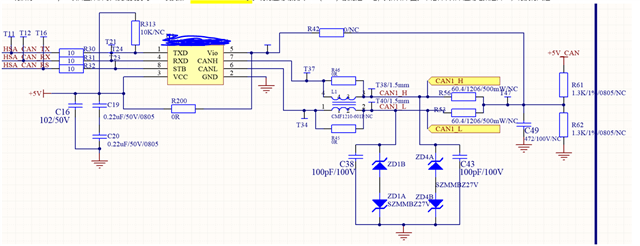Hi Team
We would like to calculate the loss of TCAN1044 , (1)Normal mode (2) Low power standby mode (3) Max power loss !
Could you share the calculation formulas ?THX
The calculations I know are roughly as follows, but I need your help to confirm
1. Normal mode
(45mA * 5V(Vcc)) + (5V(Vio) * 125uA(Io))= 225.6mW


2.Low power standby mode
(1uA * 5V(Vcc)) + (5V(Vio) * 8.5uA(Io))= 47.5uW
3. Max power loss
(70mA * 5V(Vcc)) + (5V(Vio) * 300uA(Io))= 351.5mW
4.Does the value below belong to Normal mode? It's a bit different from my calculation ,THX



